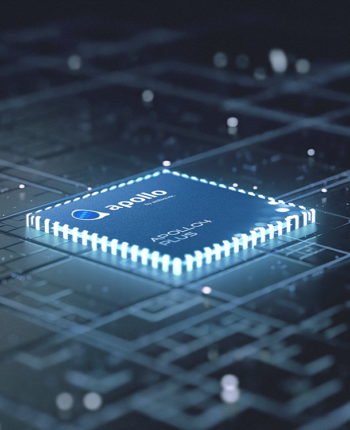Considerations To Know About Ambiq apollo 4
Considerations To Know About Ambiq apollo 4
Blog Article

Subsequent, we’ll satisfy many of the rock stars with the AI universe–the primary AI models whose do the job is redefining the longer term.
8MB of SRAM, the Apollo4 has in excess of ample compute and storage to handle elaborate algorithms and neural networks even though displaying lively, crystal-distinct, and sleek graphics. If further memory is required, external memory is supported through Ambiq’s multi-little bit SPI and eMMC interfaces.
Prompt: A gorgeous handmade video clip exhibiting the people of Lagos, Nigeria while in the calendar year 2056. Shot using a cellphone digicam.
Most generative models have this basic set up, but differ in the details. Here i will discuss a few well known examples of generative model techniques to give you a sense from the variation:
Some endpoints are deployed in distant destinations and will have only confined or periodic connectivity. For that reason, the ideal processing abilities need to be manufactured offered in the correct position.
Other common NLP models consist of BERT and GPT-3, that are commonly used in language-related duties. However, the selection in the AI style depends on your particular application for uses to your supplied issue.
Unmatched Client Practical experience: Your prospects now not remAIn invisible to AI models. Personalized tips, quick guidance and prediction of customer’s demands are some of what they provide. The result of This can be pleased buyers, rise in sales along with their brand name loyalty.
Prompt: Archeologists discover a generic plastic chair from the desert, excavating and dusting it with good care.
This authentic-time model is really a set of three separate models that get the job done collectively to apply a speech-centered consumer interface. The Voice Activity Detector is modest, effective model that listens for speech, and ignores all the things else.
extra Prompt: Wonderful, snowy Tokyo metropolis is bustling. The digital camera moves with the bustling metropolis street, following several people today enjoying the beautiful snowy temperature and browsing at nearby stalls. Gorgeous sakura petals are traveling throughout the wind in addition to snowflakes.
Our website works by using cookies Our website use cookies. By continuing navigating, we assume your authorization to deploy cookies as detailed within our Privateness Policy.
Through edge computing, endpoint AI allows your business analytics to be executed on products at the sting of your network, where by the info is gathered from IoT gadgets like sensors and on-machine applications.
Suppose that we applied a recently-initialized network to create 200 images, every time starting off with a distinct random code. The issue is: how ought to we adjust the network’s parameters to persuade it to make a bit a lot more believable samples Down the road? Observe that we’re not in an easy supervised setting and don’t have any express sought after targets
If that’s the situation, it is time scientists focused don't just on the dimensions of a model but on whatever they do with it.
Accelerating the Development of Optimized AI Features Ai edge computing with Ambiq’s neuralSPOT
Ambiq’s neuralSPOT® is an open-source AI developer-focused SDK designed for our latest Apollo4 Plus system-on-chip (SoC) family. neuralSPOT provides an on-ramp to the rapid development of AI features for our customers’ AI applications and products. Included with neuralSPOT are Ambiq-optimized libraries, tools, and examples to help jumpstart AI-focused applications.
UNDERSTANDING NEURALSPOT VIA THE BASIC TENSORFLOW EXAMPLE
Often, the best way to ramp up on a new software library is through a comprehensive example – this is why neuralSPOt includes basic_tf_stub, an illustrative example that leverages many of neuralSPOT’s features.
In this article, we walk through the example block-by-block, using it as a guide to building AI features using neuralSPOT.
Ambiq's Vice President of Artificial Intelligence, Carlos Morales, went on CNBC Street Signs Asia to discuss the power consumption of AI and trends in endpoint devices.
Since 2010, Ambiq has been a leader in ultra-low power semiconductors that enable endpoint devices with more data-driven and AI-capable features while dropping the energy requirements up to 10X lower. They do this with the patented Subthreshold Power Optimized Technology (SPOT ®) platform.
Computer inferencing is complex, and for endpoint AI to become practical, these devices have to drop from megawatts of power to microwatts. This is where Ambiq has the power to change industries such as healthcare, agriculture, and Industrial IoT.
Ambiq Designs Low-Power for Next Gen Endpoint Devices
Ambiq’s VP of Architecture and Product Planning, Dan Cermak, joins the ipXchange team at CES to discuss how manufacturers can improve their products with ultra-low power. As technology becomes more sophisticated, energy consumption continues to grow. Here Dan outlines how Ambiq stays ahead of the curve by planning for energy requirements 5 years in advance.
Ambiq’s VP of Architecture and Product Planning at Embedded World 2024
Ambiq specializes in ultra-low-power SoC's designed to make intelligent battery-powered endpoint solutions a reality. These days, just about every endpoint device incorporates AI features, including anomaly detection, speech-driven user interfaces, audio event detection and classification, and health monitoring.
Ambiq's ultra low power, high-performance platforms are ideal for implementing this class of AI features, and we at Ambiq are dedicated to making implementation as easy as possible by offering open-source developer-centric toolkits, software libraries, and reference models to accelerate AI feature development.
NEURALSPOT - BECAUSE AI IS HARD ENOUGH
neuralSPOT is an AI developer-focused SDK in the true sense of the word: it includes everything you need to get your AI model onto Ambiq’s Wearables platform. You’ll find libraries for talking to sensors, managing SoC peripherals, and controlling power and memory configurations, along with tools for easily debugging your model from your laptop or PC, and examples that tie it all together.
Facebook | Linkedin | Twitter | YouTube